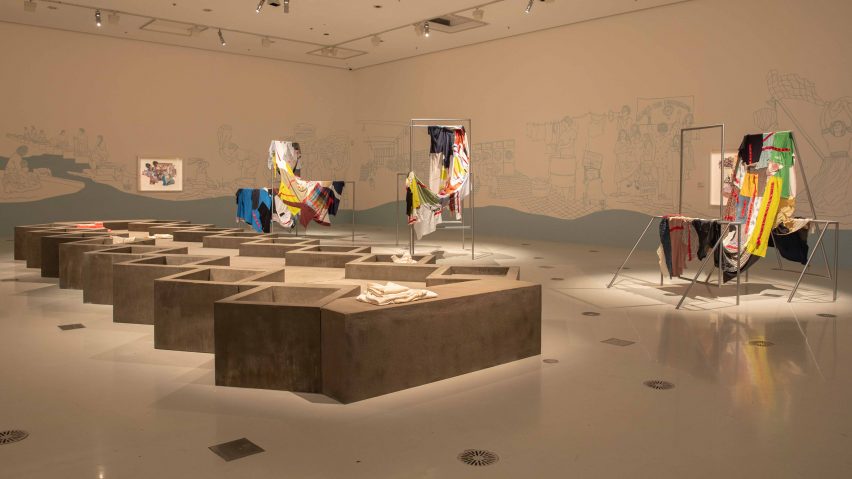
Tatiana Bilbao installs grid-shaped concrete washbasin at National Gallery of Victoria
Mexican architect Tatiana Bilbao has designed La Ropa sucia se Lava Encasa, an installation at Melbourne's National Gallery of Victoria that features a large washbasin and patchwork quilts to "produce a conversation about care".
Bilbao installed La Ropa sucia se Lava Encasa (Dirty Clothes are Washed at Home) at the National Gallery of Victoria (NGV) to argue that clothing, not architecture, is the body's "first layer of protection".
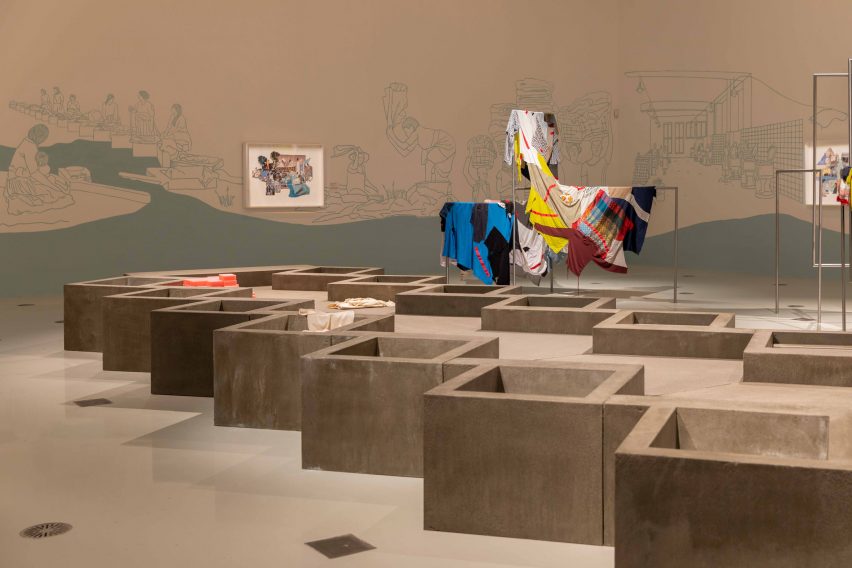
A large concrete washbasin and colourful patchwork quilts draped on geometric clotheshorse-style hangers are arranged across a single room to invite visitors to reflect on the countless people, mostly women, around the world who do our laundry, according to the architect.
"[The pieces] are used to produce a conversation about care and who produces that care in our lives and in our societies," Bilbao told Dezeen.
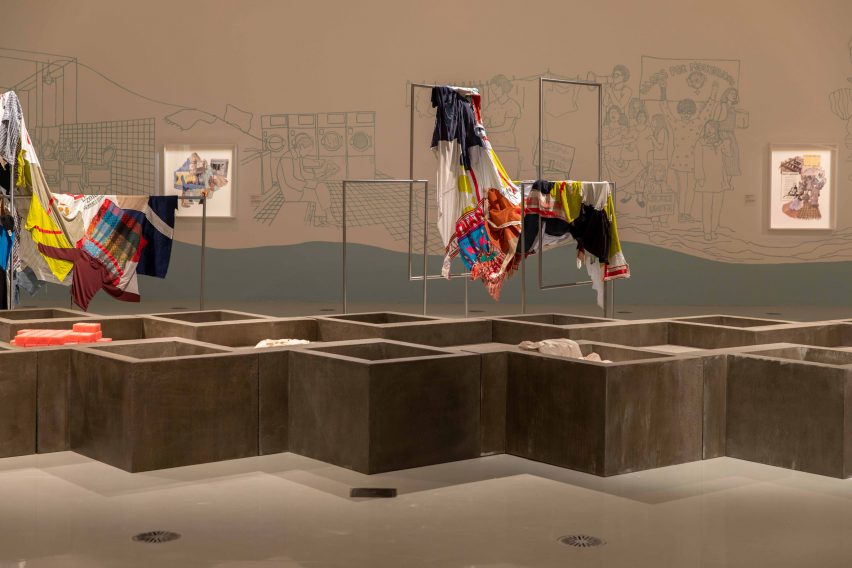
Shaped like an interlocking grid, the basin is informed by the real-life Lavaderos de Sabina Grande, an 18th-century communal laundry basin in the town of Huichapan in Mexico.
The tapestry-like patchwork quilts are made up of surplus textiles and clothing that were donated for the installation and sewn together by people across Melbourne, Mexico City and Berlin, who attended workshops held by Bilbao's eponymous studio.
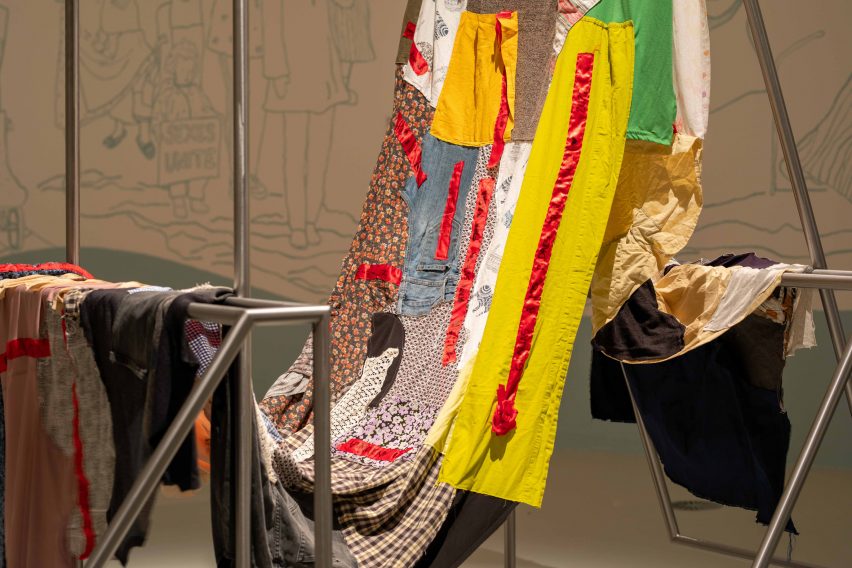
Pieces of discarded denim, gingham and other fabrics come together to create these sculptural quilts, which are interwoven with red ribbons that detail the names of people connected to each of the textiles.
The surrounding walls are decorated with large-scale drawings and mixed-media collages that depict the history of communal washhouses and laundries all over the world.
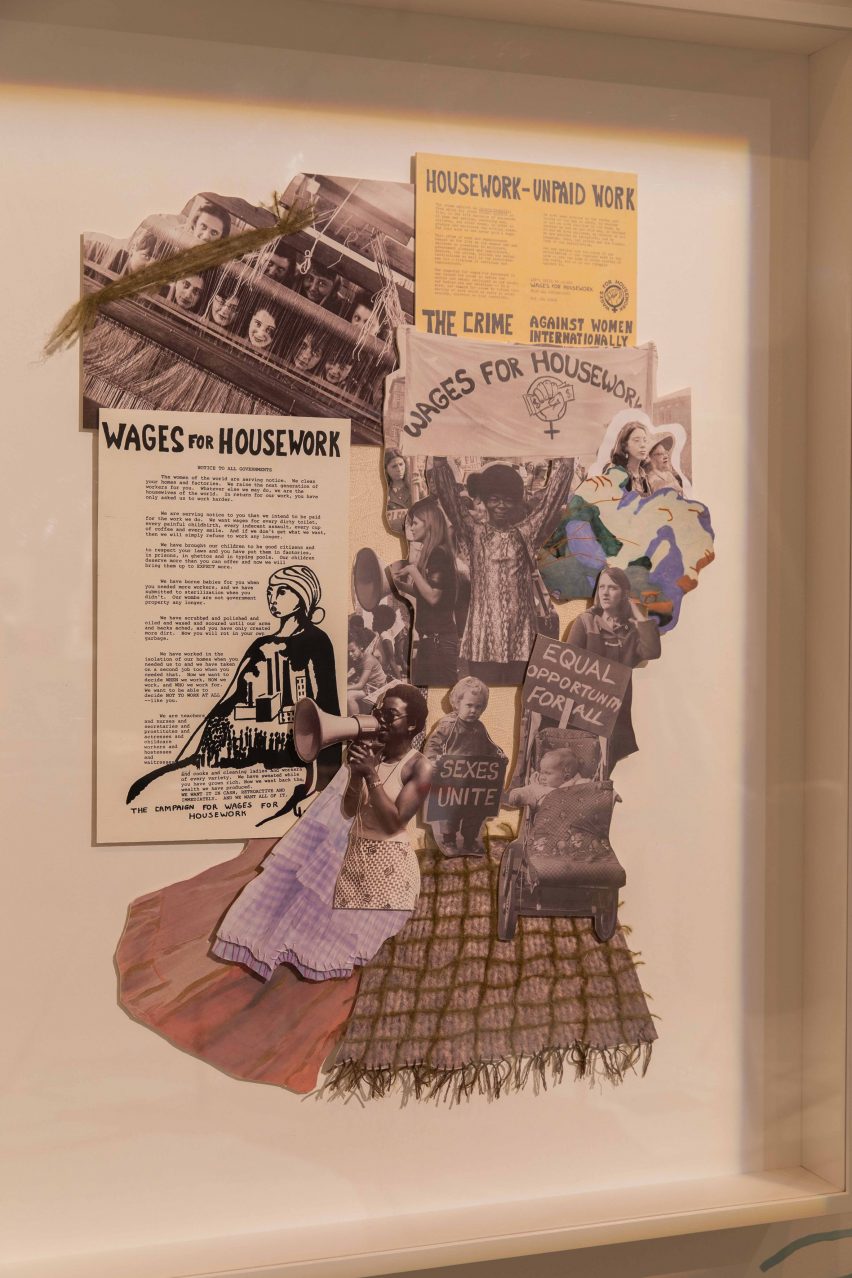
These designs intend to communicate how this kind of labour has impacted women in particular, while also drawing attention to the social bonds that laundries can and have created over time.
Bilbao explained that the installation intends to urge visitors to consider how a commonplace practice like laundry has the potential to bring people together and care for each other.
"It’s urgent that architecture becomes a tool for a systemic change," she noted. "We can't continue to produce [architecture and design] the same way if we intend to move forward so we have to find different ways to sustain our bodies on this planet."
La Ropa sucia se Lava Encasa is the inaugural project of the MECCA x NGV Women in Design Commission – a series that will invite international female architects or designers to create "new and significant" work for NGV over the next five years.
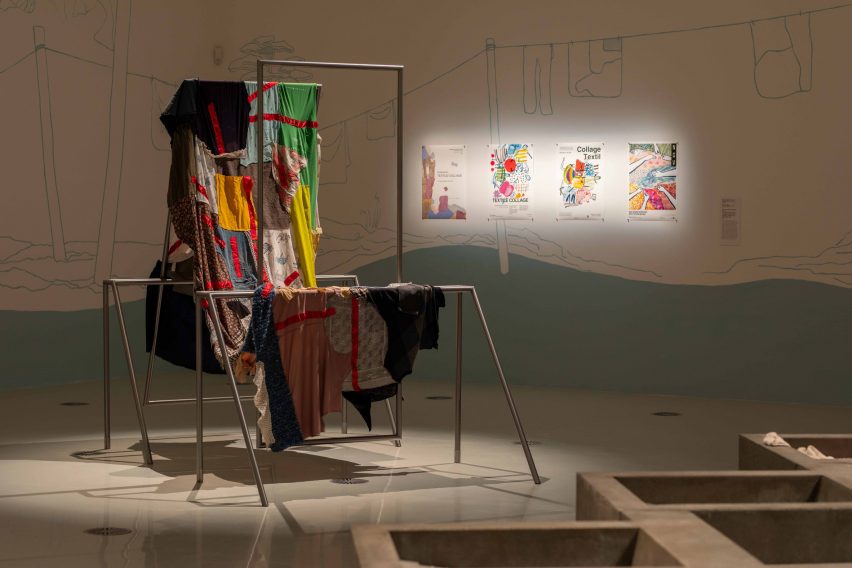
Earlier this year, Tatiana Bilbao Estudio created a sculptural pavilion for an exhibition called Women In Architecture at the Danish Architecture Center in Copenhagen.
Bilbao was also among the architects who donated drawings to a charity auction held in the wake of the 2020 Beirut explosion in aid of rebuilding the city after the disaster.
La Ropa sucia se Lava Encasa is on display at NGV from 6 October 2022 to 29 January 2023. See Dezeen Events Guide for an up-to-date list of architecture and design events taking place around the world.
The photography is by Kate Shanasy.